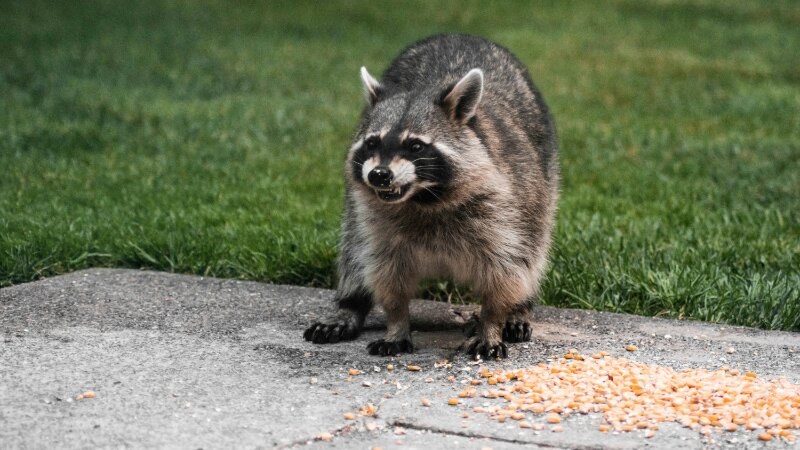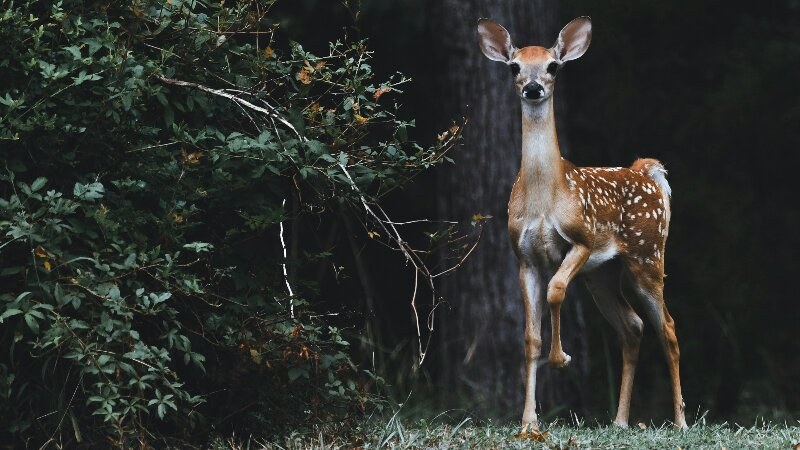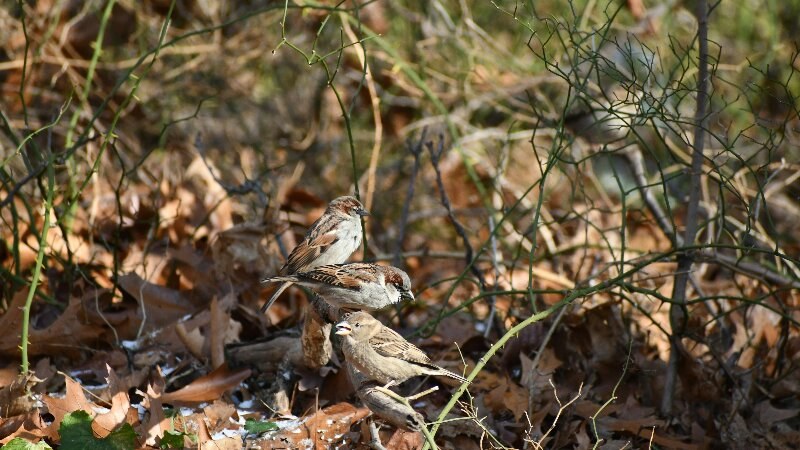Common Wildlife Entering Your Yard and How to Handle Them
Reading time: 6 minutesReports of yards transforming into unexpected wildlife festivals across Western Canada are becoming increasingly common. From the stealthy raccoon to the digging prowess of moles, your green spaces can draw a curious crowd.
While the presence of these animals can add a touch of wild charm, they also bring a few challenges to your doorstep.
Understanding the local wildlife and their habits not only prepares you for these encounters but also teaches you how to manage them effectively.
Identifying and Dealing with Common Backyard Wildlife
1. Skunks

Skunks are perhaps most notorious for their ability to spray a foul-smelling liquid as a defence mechanism. They typically enter yards in search of food or a place to den, particularly under decks, sheds, or porches.
To deter skunks, eliminate food sources such as garbage, fallen fruit, and pet food left outside overnight. Ensure that all openings under porches, decks, and sheds are securely blocked off to prevent skunks from nesting.
In the event of a skunk encounter, it’s best to use humane live traps and carefully follow local wildlife regulations for relocation. Be mindful to handle skunks gently to avoid being sprayed.
2. Raccoons

Raccoons are clever and dexterous, with a remarkable ability to open lids, untie knots, and climb. Their quest for food often leads them to trash cans, compost bins, and pet food dishes.
To keep raccoons at bay, secure trash cans with animal-proof lids and straps, and remove any outdoor pet food at night. Consider using motion-sensor lights near trash areas as a deterrent.
For persistent raccoon issues, you may need professional trapping and relocation in adherence to local laws.
3. Squirrels
Active primarily during the day, squirrels are attracted to gardens, bird feeders, and trees that produce nuts or fruit. To control squirrel access to bird feeders, use baffle devices or squirrel-proof feeders that close under a squirrel's weight.
Enclose gardens with high, sturdy fences that curve outward to prevent squirrels from climbing over. Consider planting decoy gardens with foods that squirrels prefer to distract them from more valuable garden areas.
4. Deer

Deer are a common sight in suburban and rural areas and can do extensive damage to shrubs, flowers, and vegetable gardens. They’re especially fond of smooth, tender young plants.
Fencing is one of the most effective deer deterrents. A tall fence of at least 8 feet will discourage them from entering your property. Alternatively, planting deer-resistant plants can reduce their interest in your garden. These include aromatic herbs like lavender and garlic, which deer tend to avoid.
5. Rabbits
These small mammals typically invade lawns and gardens, where they feed on a variety of vegetables and flowering plants. They won’t often come up to you and say ‘What’s up doc’ before nibbling away at your greens.
Rabbit-proof fencing is crucial and should be buried at least a few inches underground to prevent them from digging underneath. Spraying plants with a hot pepper solution can also deter rabbits from nibbling on them.
Regularly inspecting your yard for signs of rabbit nests or damage can help you address problems before they escalate.
6. Birds

Certain birds, such as magpies, starlings, and house sparrows, can become problematic when they nest in home vents or feast on garden fruits. These species are particularly adept at exploiting urban environments, leading to issues with noise, mess, and damage.
To discourage nesting, secure all entry points to your home with appropriate vent covers or mesh. Use netting over fruit-bearing plants in your garden to protect them from being eaten.
Visual deterrents like reflective tape, aluminum pie pans, or fake predators can help keep birds away from certain areas. For larger bird problems, sound deterrents or professional bird control services may be necessary.
When to Call in Professional for Wildlife Trapping
Dealing with wildlife can be inconvenient and sometimes dangerous, so there are certain situations where it's advisable to call in professionals. Here are some scenarios where you should consider contacting a wildlife control expert:
- Safety Concerns: If the animal is showing signs of aggression or is known to be dangerous (e.g., raccoons or large animals). Certain animals also can carry diseases (like rabies) that pose significant health risks to you. In these cases, it’s safer to have a professional handle the situation.
- Regulatory and Legal Issues: Some animals are protected by law, and trapping or relocating them can result in legal penalties. Professionals are knowledgeable about local wildlife laws and can ensure compliance.
- Difficult Access: Animals in hard-to-reach places (like trees in your yard, chimneys, or walls) can be difficult to trap without the right equipment.
- Specialized Knowledge: Some species have specific trapping and relocation requirements that professionals are trained to handle.
- Humane Trapping and Relocation: We’re trained to use humane trapping methods and know the best practices for relocating animals without causing harm. For an average homeowner, this can be a huge challenge.
- Animal Welfare: If you’re concerned about the welfare of the animal, a professional can ensure it’s handled in the most ethical way possible.
- Property Damage: Some animals, such as raccoons, skunks, and squirrels, can cause significant damage to your yard and other parts of your property (e.g., destroying your plants, chewing through wires or insulation, rummaging through your trash, leaving garbage everywhere). Professionals can mitigate damage and offer solutions to prevent future problems.
- Exclusion Services: Wildlife control experts can provide exclusion services to seal entry points and prevent future intrusions.
Have a Wildlife Problem? Humane Wildlife Trapping May Be The Solution
When we think of keeping wildlife off your property, we immediately think of humane wildlife trapping.
The principle behind humane trapping is to capture animals without causing unnecessary stress or harm. This involves using well-designed live traps appropriate for the animal's size and species, all the while preventing injury during capture.
We believe it’s all about choosing the right trap and evaluating its placement. Here are some principles we abide by:
- The trap should be sturdy enough to safely contain the animal but positioned so that the animal is fully inside the trap before it springs, minimizing the chance of injury.
- To increase the chance of capture, traps should be set along paths where animals are known to travel or near their entry points.
- The bait should be enticing enough to draw the animal in without causing harm or unnecessary distress.
- Regular monitoring of the traps to ensure that any animal caught is dealt with promptly. This not only minimizes the animal's stress but also reduces the time it spends confined.
- Once an animal is captured, it’s transported and released according to local wildlife regulations, usually in a habitat where it will thrive.

Safeguard Your Yard with Buzz Boss
When dealing with wildlife trapping, it's important to approach the situation with empathy and compassion for the animals involved.
At Buzz Boss, we specialize in humane wildlife trapping, expertly managing encounters with skunks, raccoons, squirrels, and more in a way that prioritizes both human safety and animal welfare. Our approach ensures that wildlife is treated with respect and that your property remains a safe environment.
Contact us today for a consultation and an estimate. Let's work together to create a balanced, wildlife-friendly space around your home.
Our wildlife trapping and removal services are available in Calgary, Edmonton, Red Deer, Regina, Saskatoon, Winnipeg, and Okanagan.

